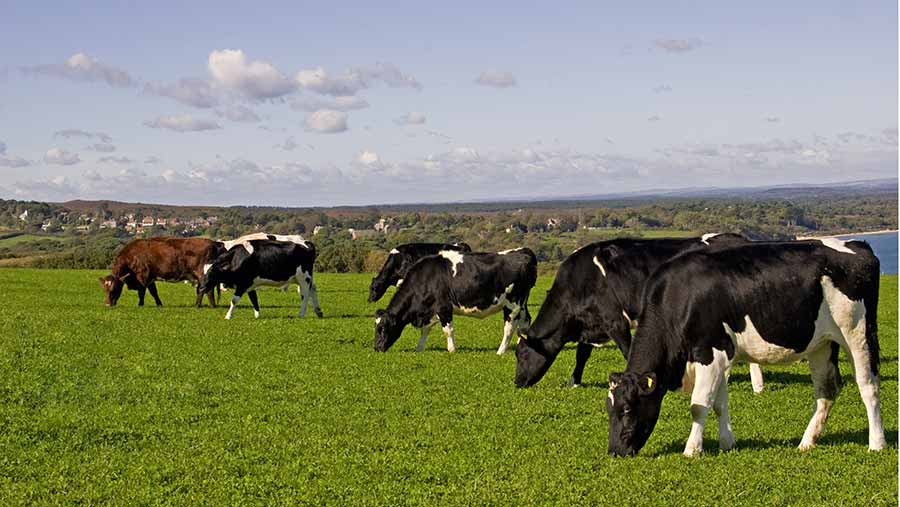Vets back vaccination as lungworm cases jump 44% in 2019
 © Nicholas and Sherry Lu Aldridge/FLPA/imageBROKER/Shutterstock
© Nicholas and Sherry Lu Aldridge/FLPA/imageBROKER/Shutterstock Graziers worried about late season lungworm challenge should investigate their options for vaccination, leading vets advise in response to a recent rise in cases.
The Animal and Plant Health Agency (Apha) says there was a 44% rise in reported and diagnosed lungworm cases between 2018 and 2019.
Animal health experts blame the mild and wet weather for the increase.
The data compounds concerns laid out in University of Liverpool study which found lungworm (husk) cases have increased tenfold in the past two decades.
Vets fear that extended grazing periods could leave livestock vulnerable to the parasite into the autumn, after wormer protection may have worn off.
See also: Q&A: What is lungworm and how does it affect cattle?
What animals should I vaccinate?
- Vaccinate calves in herds with a history of lungworm
- Vaccination is not justified in low-prevalence regions, or on farms with no history of lungworm
- Treat all purchased cattle to prevent introducing lungworm to lungworm-free herds.
- Farms that have been worming cattle could have a greater risk when stock are exposed to lungworm, because they have no immunity.
Source: Control of Worms Sustainably (Cows)
Helen Carty, veterinary investigation officer at Scotland’s Rural College (SRUC), says: “Farmers across Great Britain are able to turn cattle out longer – up to two months longer in some cases.
“We’re seeing a lot of cases towards the end of the later part of the extended grazing season when protection from preventative wormers has worn off, leaving livestock vulnerable.
“We’re also finding that long-acting anthelmintics limit the ability of cattle to build up immunity against lungworm as they will be exposed to fewer larvae.
“When cattle are then exposed to contaminated pastures, producers will be at risk for a significant lungworm outbreak.”
Gareth Hately, the Apha cattle expert group’s veterinary lead, says lungworm could survive in pasture longer and contaminate new areas if conditions remain warm and wet.
Vaccination
Ms Carty says the most effective way to prevent lungworm infections is to build immunity through vaccination.
“While wormers can be used to control disease, they may limit exposure to lungworm larvae, meaning calves remain susceptible to infection in future years,” she says.
“Fortunately, wormer resistance is not currently recognised as a significant issue in cattle yet. However, we should be looking at ways to minimise our use of wormers to slow the development of resistance. Vaccination is one significant way in which we can do this.”
How to build immunity through vaccination
Understand the lifecycle
- Lungworm starts when cattle eat grass contaminated with lungworm larvae (Dictyocaulus viviparus).
- These larvae migrate into the animals’ lungs.
- They develop into adults in the lungs and are coughed up and swallowed by the animal.
- Eggs then hatch in the digestive system and are passed out on to the pasture as larvae, where the cycle can start over again.
Understand the vaccine
- An anthelmintic (wormer) aims to kill the parasite and reduce or prevent exposure.
- Vaccination aims to develop immunity to the lungworm through use of irradiated larvae in the lungworm vaccine.
- When cattle are vaccinated, irradiated larvae migrate through the lungs and allow the animal to develop immunity but not infection. Because the larvae have been irradiated – exposed to radiation but still live – they are unable to develop fully.
